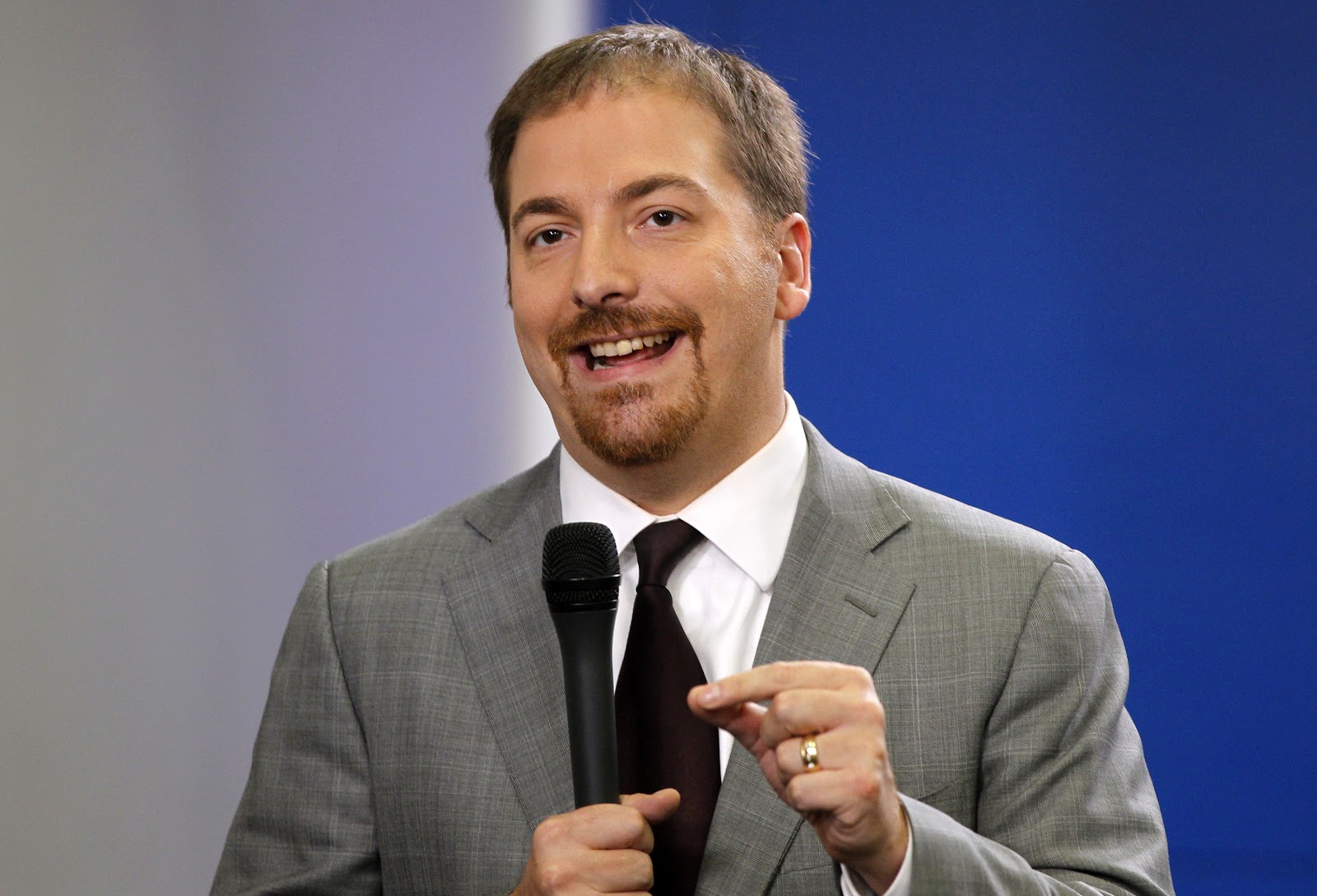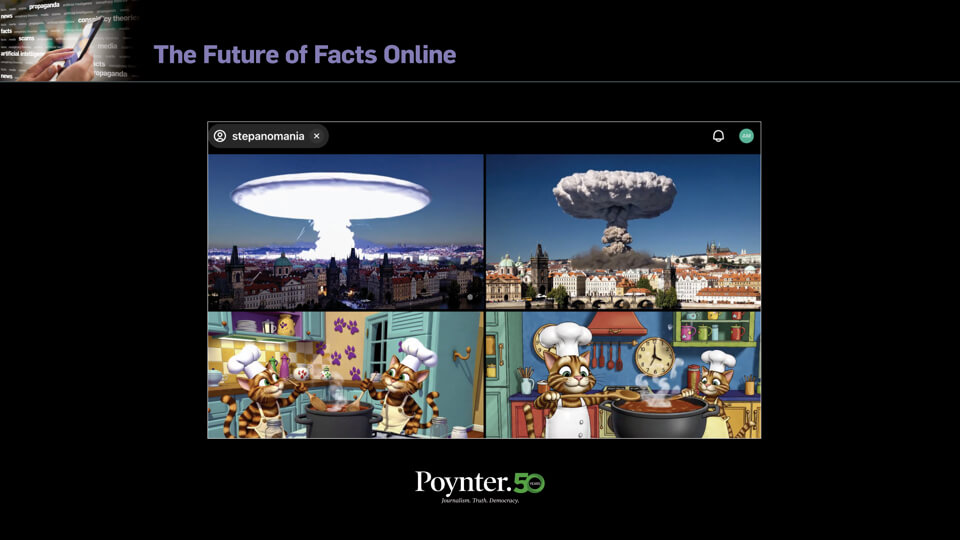The Poynter Report is our daily media newsletter. To have it delivered to your inbox Monday-Friday, click here.
These are scary times.
We are facing an invisible killer. Some lives are being lost. All lives are being turned upside down. The economy is flirting with disaster. The world as we know feels as if it has come to a stop.
And while journalism is doing its absolute best to make sense of the coronavirus and to ask the right questions, there is one question that no journalist, no public official, no doctor and no scientist can answer.
When is this all going to end?
President Donald Trump held another news conference Tuesday. From now until Americans step into a voting booth in November, we will debate how Trump and the government have handled this crisis. Until then, journalists will continue to ask the president and other officials everything they can about this crisis.
The problem, however, is that no one has an answer to that question. It doesn’t mean journalists shouldn’t keep pushing for other answers, holding the powerful accountable and keeping the public informed. But there is likely going to be frustration around when we can get to certain questions that simply can’t be answered.
NBC News’ Lester Holt alluded to this while interviewing Dr. John Torres after Trump’s news briefing Tuesday.
“It was clear (that) the reporters in the room — all of us — are hungry for answers,” Holt said. “When is this over? When do we peak? When do we know this is working? We couldn’t really get an answer and obviously it’s a very difficult thing to get an answer for. What was your takeaway in terms of the ability to keep the American public engaged and to understand how important these measures are?”
Torres responded, “I think that’s one of the important points they made here — that it’s really hard to give you a specific answer and they were hesitant to do that because they know if they said a certain number of days that 30, 45 days later we hold their feet to the fire, and say, ‘You said at this point this would be better’ and it’s not necessarily. So they know this is going to be a moving target, they know it is something they have to keep a firm eye on.”
“Especially your people”
There was an odd exchange during Tuesday’s news conference when Trump addressed a question by Fox News’ John Roberts. At the time, Trump was standing away from the microphone and Roberts asked him to move closer.
Trump moved closer when he realized the “people at home” might not be able to hear him.
“Those are very important people, come to think of it,” Trump said. Then he added, “Especially your people.”
YOUR people?
Get out
China is telling some American journalists to get out. In another sign of escalating tensions between the two countries, China intends to expel American journalists who work for The New York Times, The Washington Post, The Wall Street Journal, Time and the Voice of America.
China is ordering American journalists whose press credentials are due to expire before the end of 2020 to notify China’s Department of Information of the Ministry of Foreign Affairs within four days and hand back their press cards within 10 days. It added that those journalists “will not be allowed to continue working as journalists in the People’s Republic of China, including its Hong Kong and Macao Special Administrative Regions.”
“American officials had been bracing for a retaliatory move by Beijing,” wrote Marc Tracy and Edward Wong in The New York Times. “On March 3, after the Trump administration announced new regulations on five Chinese state-run news organizations working in the United States, Hua Chunying, a Foreign Ministry spokeswoman, wrote on Twitter, ‘Now the U.S. has kicked off the game, let’s play.’ That was widely seen as a signal of imminent retaliation.”
In a statement, New York Times executive editor Dean Baquet strongly condemned China’s decision, saying in this time of the coronavirus, it’s important that the world has a “free and open flow of credible information.”
“It is critical that the governments of the United States and China move quickly to resolve this dispute and allow journalists to do the important work of informing the public,” Baquet added. “The health and safety of people around the world depend on impartial reporting about its two largest economies, both of them now battling a common epidemic.”
[the_ad id=”667872″]
America tunes in
Give Americans credit. They are seeking out news about the coronavirus. Case in point: Both NBC’s “Meet the Press” and CBS’s “Face the Nation” had the biggest viewership numbers in years last Sunday.
“Meet the Press” had 4.657 million viewers for Sunday’s show, which was dedicated entirely to discussing coronavirus. That was the most since Jan. 4, 2009, when an interview with the Senate majority leader at the time, Harry Reid, helped the show bring in 4.715 million viewers. This past Sunday’s “Meet the Press” had several guests, including Dr. Anthony Fauci and Governors Mike Dewine (R-Ohio) and J. B. Pritzker (D-Ill.)
Meanwhile, last Sunday’s “Face the Nation” had 4.354 million viewers, the biggest audience that show has had since Jan. 22, 2017. That was two days after President Trump was inaugurated.
Finally, Fox News is drawing strong primetime ratings during the coronavirus coverage, leading all cable news networks with an average viewership of 3.594 million. It was Fox News’ second-highest viewership week of the year, while Sean Hannity’s show, which has been on the air since January 2009, had his second-highest week ever in total viewers with 4.5 million.
Standing together
Journalists and staff at The Roanoke (Virginia) Times have announced plans to unionize as the Timesland News Guild. More than 75% of the newsroom — including reporters, photographers, graphic artists, copy and online editors, designers and support staff — signed union cards on Tuesday.
They become the first to seek a union under Lee Enterprises, which in January announced it would take ownership over a group of 30 papers from Warren Buffett’s Berkshire Hathaway Media Group. Lee had been managing those papers, with the exception of The Buffalo News, since July 2018.
In a statement, the union criticized Lee for shrinking The Roanoke Times’ print edition and cutting full-time copy editing jobs to part-time without benefits. Before that, the union said, BH Media had reduced sports, crime, tech, arts and food coverage. The union said the newsroom staff has been slashed in half over the past six years.
“We all know we’re in a struggling industry,” said Laurence Hammack, a reporter at The Roanoke Times since 1985, in a statement. “But newspapers are vital to our communities, and this is perhaps our last chance to preserve that role.”
[the_ad id=”667878″]
Hot type
- The Plain Dealer in Cleveland just had drastic layoffs. Now it is trying to cover the huge story of coronavirus. Washington Post media columnist Margaret Sullivan looks in on how it is doing it.
- Has coronavirus canceled culture? “Not on our watch,” writes Los Angeles Times culture columnist and critic Mary McNamara.
- The Washington Post’s Paul Farhi and Sarah Ellison with how Fox has changed its tune on coronavirus.
Have feedback or a tip? Email Poynter senior media writer Tom Jones at tjones@poynter.org.
Upcoming Poynter training
- Building a Scalable Personal Brand (Online group seminar). Deadline: March 30.
- Mining Stories from the 2020 Census (Webinar). Deadline: March 20.
Want to get this briefing in your inbox? Sign up here.








